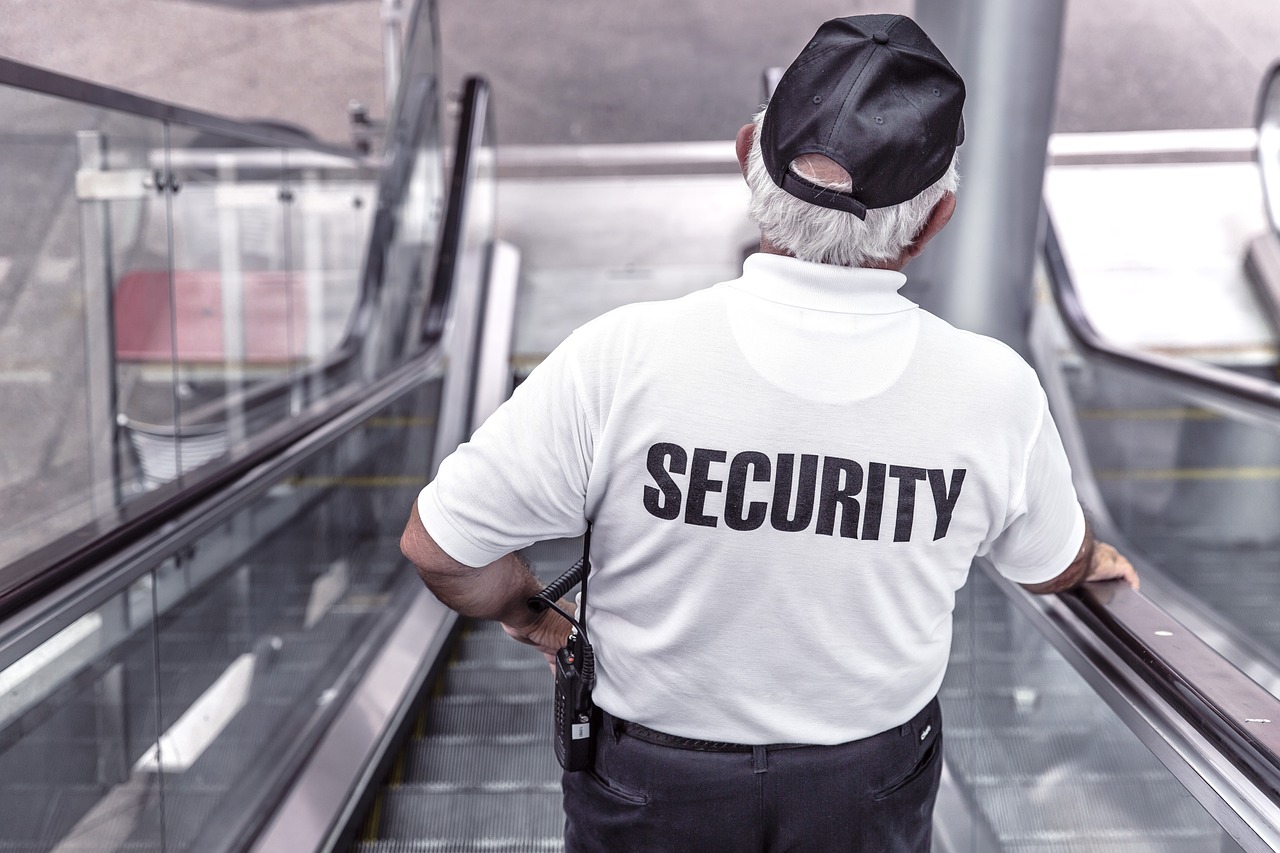How much does Safety Depend on Human Behavior?
When we think about safety, it's easy to imagine hard hats, safety nets, and warning signs. However, the real cornerstone of safety often lies in human behavior. You might be surprised to learn just how much our actions, decisions, and interactions with others shape safety outcomes in various environments. Whether it's a bustling construction site, a healthcare facility, or even our homes, the way we behave can either enhance safety or create risks. In this article, we will explore the intricate relationship between safety and human behavior, highlighting how individual actions and social influences play a pivotal role in ensuring safety.
Consider this: every time you buckle your seatbelt, you're making a conscious decision that directly impacts your safety. This simple action reflects your attitude towards risk and your understanding of safety protocols. But safety isn't just about individual choices; it's also about how we influence one another. Think about the last time you saw someone doing something unsafe—did you speak up? Our collective behavior, shaped by social norms and organizational culture, can either promote or undermine safety.
In many ways, human behavior is like a double-edged sword. On one side, we have the potential to create a safe environment through positive actions and decision-making. On the flip side, negligence, complacency, or poor communication can lead to accidents and injuries. This duality raises some important questions: How do we cultivate a culture of safety? What factors influence our safety behaviors? And how can organizations leverage human behavior to enhance safety outcomes?
To answer these questions, we need to delve into the role of human factors in safety. Understanding how our perceptions, attitudes, and psychological states affect our behavior is crucial for improving safety across various contexts. For instance, if employees feel valued and empowered, they are more likely to adhere to safety protocols. Conversely, if they feel pressured or undervalued, they may take shortcuts that jeopardize their safety and that of others.
As we navigate this complex landscape, it's essential to recognize that safety is not just a set of rules to follow; it's a mindset that requires ongoing commitment and engagement from everyone involved. By fostering a culture that prioritizes safety and encourages open communication, we can create an environment where safe behaviors flourish and risks diminish.
- What are human factors in safety? Human factors refer to the psychological, social, and environmental influences that affect how individuals behave in relation to safety.
- How can organizations improve safety through behavior? Organizations can improve safety by implementing training programs, fostering a positive safety culture, and encouraging open communication among team members.
- What role does communication play in safety? Effective communication ensures that safety protocols are understood and followed, reducing the likelihood of misunderstandings and accidents.
- What are behavioral safety programs? Behavioral safety programs focus on promoting safe practices through observation and feedback, aiming to reinforce positive behaviors in the workplace.

The Role of Human Factors in Safety
Understanding human factors is crucial for improving safety in any environment, whether it's a construction site, a healthcare facility, or even your own home. The way individuals perceive risks, their attitudes towards safety, and their psychological states can significantly influence their behavior and decision-making processes. Imagine you're driving a car; your mood, distractions, and even your past experiences can dictate how safely you navigate the road. This analogy highlights the intricate relationship between human behavior and safety outcomes.
At the core of human factors is the understanding that people are not machines. We are influenced by a myriad of factors, including our emotions, our environment, and even the social dynamics around us. For instance, if someone feels stressed or overwhelmed, their ability to make safe decisions can diminish. This is why organizations must pay attention to the psychological well-being of their employees. A well-rested, mentally healthy worker is more likely to adhere to safety protocols than someone who is fatigued or anxious.
Moreover, our perceptions of risk can vary greatly from one person to another. Some individuals may underestimate hazards, believing that "it won't happen to me," while others may be overly cautious, potentially stifling productivity. Therefore, understanding these differences is essential for creating effective safety programs. Organizations can utilize various methods to assess and address these perceptions, such as surveys or focus groups, to tailor their safety initiatives accordingly.
Another critical aspect of human factors is the impact of social influences. People often look to their peers for cues on how to behave. If safety is prioritized and modeled by leadership and coworkers, it creates a culture where safe behaviors are the norm. Conversely, if risky behaviors are tolerated or even rewarded, it can lead to a downward spiral in safety practices. This is where the concept of social proof comes into play; individuals are more likely to engage in safe practices when they see others doing the same.
In summary, the role of human factors in safety cannot be overstated. By understanding how perceptions, attitudes, and psychological states influence behaviors, organizations can develop more effective safety strategies. This involves not only training and education but also fostering a supportive environment where employees feel valued and understood. In doing so, we can create safer workplaces that not only protect individuals but also enhance overall productivity and morale.

Impact of Training and Education
When it comes to safety, the influence of training and education cannot be overstated. Imagine stepping into a workplace where every employee is not only aware of the safety protocols but is also confident in executing them. This is the power of effective training. It’s like having a well-tuned machine; every part knows its role, and together, they create a seamless operation. Training equips individuals with the knowledge and skills needed to recognize hazards, make informed decisions, and respond appropriately in emergencies.
Moreover, education plays a critical role in shaping attitudes towards safety. When employees understand the why behind safety measures, they are more likely to embrace and adhere to them. For instance, a workshop that explains the consequences of neglecting safety protocols can create a lasting impact on an employee's mindset. It's not just about following rules; it's about fostering a culture where safety is valued and prioritized.
Let’s delve into some effective training methods that have proven successful in various industries:
| Training Method | Description | Effectiveness |
|---|---|---|
| Hands-On Training | Practical exercises that simulate real-life scenarios. | High |
| Online Courses | Flexible, self-paced learning modules. | Moderate |
| Workshops | Interactive sessions that encourage group participation. | High |
These methods are not just about delivering information; they are about engaging employees in a way that resonates with them. For example, hands-on training often results in higher retention rates because it allows employees to practice skills in a controlled environment. On the other hand, online courses offer flexibility, which can be beneficial for those with busy schedules but may lack the engagement found in live sessions.
Another critical aspect of training is the need for continuous education. Safety is not a one-time lesson but an ongoing commitment. Organizations must implement regular refresher courses to keep safety practices fresh in everyone’s mind. This can be likened to maintaining a car; regular check-ups prevent breakdowns and ensure everything runs smoothly. By fostering a culture of continuous learning, organizations can adapt to new safety standards and technologies, further enhancing their safety measures.
In conclusion, the impact of training and education on safety is profound. By equipping employees with the right tools and knowledge, organizations can significantly reduce the risk of accidents and injuries. It’s about creating a safe environment where everyone feels empowered to contribute to their safety and that of their colleagues. After all, safety is a shared responsibility, and education is the foundation upon which that responsibility is built.
- Why is safety training important? Safety training is essential because it helps employees understand hazards and how to prevent accidents, fostering a culture of safety.
- How often should safety training be conducted? Organizations should conduct safety training regularly, with refresher courses at least annually or whenever new protocols are introduced.
- What are some effective training methods? Effective training methods include hands-on training, workshops, and online courses, each serving different learning preferences.

Behavioral Safety Programs
Behavioral safety programs are essential tools in the quest to enhance safety in various workplaces. These programs are designed to promote safe practices by focusing on the behaviors of individuals rather than just the systems and equipment in place. Think of it this way: just like a well-tuned engine requires the right fuel and regular maintenance, a safe work environment thrives on the right behaviors and attitudes from its employees. By encouraging individuals to take ownership of their actions, these programs can lead to significant reductions in accidents and injuries.
At the heart of behavioral safety programs is the concept of observation and feedback. This means that employees are not only encouraged to monitor their own behaviors but also to observe their colleagues. When someone sees a potentially unsafe action, they are empowered to provide constructive feedback. This peer-to-peer interaction fosters a culture of safety where everyone feels responsible for one another. Imagine a scenario where a team member notices a colleague not wearing proper protective equipment; instead of turning a blind eye, they can engage in a supportive conversation that emphasizes safety. This proactive approach is what sets behavioral safety programs apart from traditional safety training.
Implementation of these programs can vary across industries, but they generally follow a few key steps. First, organizations must identify specific behaviors that need improvement. This could range from something as simple as wearing safety goggles to more complex behaviors like adhering to lockout/tagout procedures. Once these behaviors are identified, organizations can develop training sessions that focus on these specific areas. For instance, they might conduct workshops where employees can role-play various scenarios, allowing them to practice safe behaviors in a controlled environment.
Moreover, the success of behavioral safety programs can often be measured through various metrics. Organizations may track the number of near misses reported, the frequency of safety audits, or even conduct employee surveys to gauge their perception of safety in the workplace. Here’s a simple table that outlines some common metrics used to evaluate the effectiveness of these programs:
| Metric | Description | Purpose |
|---|---|---|
| Near Miss Reports | Incidents that could have resulted in injury but did not | To identify potential hazards and improve safety measures |
| Safety Audits | Systematic evaluations of safety practices | To ensure compliance with safety protocols |
| Employee Surveys | Feedback from employees regarding safety culture | To gauge employee perceptions and identify areas for improvement |
However, it's important to acknowledge that while behavioral safety programs have proven to be effective, they are not without their challenges. Some organizations may encounter resistance from employees who are skeptical about the need for such programs. Others might struggle with inconsistent participation in observation and feedback practices. To overcome these hurdles, it's crucial for leadership to actively promote the importance of safety and demonstrate their commitment by participating in these programs themselves. By leading by example, they can inspire a collective commitment to safety that permeates the entire organization.
In conclusion, behavioral safety programs represent a powerful approach to enhancing workplace safety. By focusing on human behavior and fostering a culture of accountability and communication, organizations can create an environment where safety is a shared priority. These programs not only reduce accidents but also empower employees, making them active participants in their own safety and that of their colleagues. As we continue to explore the intricate relationship between safety and human behavior, it becomes clear that the path to a safer workplace is paved with proactive engagement and a commitment to continuous improvement.

Case Studies of Successful Programs
When it comes to enhancing safety through behavioral programs, real-world examples can provide invaluable insights. Let's take a closer look at some successful case studies that highlight the effectiveness of behavioral safety initiatives in various industries. These cases not only showcase the implementation strategies but also illustrate the tangible benefits that can arise from a focused approach to safety.
One prominent example is a large manufacturing company that implemented a behavioral safety program aimed at reducing workplace accidents. By engaging employees in safety observations and providing immediate feedback, the company saw a remarkable transformation in safety culture. Over a span of two years, the incident rate dropped by 50%, showcasing the power of employee involvement in safety practices. This program emphasized the importance of peer-to-peer feedback, where workers felt empowered to speak up about unsafe practices without fear of retribution.
Another compelling case is found in the construction industry, where a major contractor adopted a behavioral safety program that included regular safety meetings and training sessions focusing on risk assessment. The implementation of this program led to a 30% reduction in accidents on job sites within the first year. The key to their success was fostering an environment of open communication, where team members could discuss potential hazards and share best practices. This proactive approach not only improved safety but also enhanced team cohesion and morale.
In the healthcare sector, a hospital introduced a behavioral safety initiative to minimize medication errors and improve patient safety. By implementing a system of checks and balances, along with continuous education for staff, the hospital reported a 40% decrease in medication-related incidents. This case highlights the importance of ongoing training and the role of a supportive culture that encourages staff to report errors without fear of punishment. Such an environment promotes learning and continuous improvement in safety practices.
To further illustrate the impact of these programs, let’s take a look at a table summarizing key outcomes from these case studies:
| Industry | Program Focus | Outcome |
|---|---|---|
| Manufacturing | Peer-to-Peer Feedback | 50% Reduction in Incident Rate |
| Construction | Risk Assessment Training | 30% Reduction in Accidents |
| Healthcare | Medication Safety Checks | 40% Decrease in Medication Errors |
These case studies demonstrate that the success of behavioral safety programs hinges on several factors: employee engagement, open communication, and a culture that prioritizes safety above all else. When organizations invest in these areas, they not only see a decrease in accidents but also foster a workplace environment where safety is a shared responsibility. The journey towards a safer workplace is not just about rules and regulations; it's about cultivating a culture where every individual feels accountable for their own safety and that of their colleagues.
As we can see from these examples, the path to improved safety is paved with commitment, collaboration, and a continuous drive for enhancement. Organizations that recognize and act upon the intricate relationship between human behavior and safety are bound to reap the rewards of a safer and more productive workplace.

Challenges in Implementation
Implementing behavioral safety programs can be a daunting task for many organizations. While the benefits of these programs are well-documented, the road to successful implementation is often fraught with challenges that can derail even the most well-intentioned initiatives. One of the primary hurdles is the resistance to change from employees. People are naturally inclined to stick to their routines, and introducing new safety practices can be met with skepticism or outright opposition. This resistance can stem from a lack of understanding of the program's purpose or fear of increased scrutiny in their work.
Another significant challenge is the lack of management support. For a behavioral safety program to thrive, it requires active and visible commitment from leadership. If management is not fully on board, it sends a message to employees that safety is not a priority, undermining the program's effectiveness. Furthermore, without proper resources—be it time, personnel, or financial backing—these programs can falter. Organizations may underestimate the amount of training and follow-up required to ensure that safety behaviors are not just taught but ingrained into the workplace culture.
Moreover, inconsistent communication can pose a major barrier. If safety protocols are not communicated clearly and consistently, employees may become confused about expectations, leading to non-compliance. A lack of feedback mechanisms can also hinder progress. Employees need to feel that their observations and suggestions are valued; otherwise, they may disengage from the safety process altogether.
To illustrate these challenges, consider the following table that summarizes common obstacles organizations face when implementing behavioral safety programs:
| Challenge | Description |
|---|---|
| Resistance to Change | Employees may be reluctant to alter their established routines. |
| Lack of Management Support | Without commitment from leadership, safety initiatives may lack credibility. |
| Inconsistent Communication | Poor communication can lead to confusion and non-compliance among staff. |
| Insufficient Resources | Programs may fail due to inadequate funding, training, or personnel. |
| Lack of Feedback Mechanisms | Without a system for feedback, employees may feel undervalued and disengaged. |
Addressing these challenges requires a multifaceted approach. Organizations should prioritize effective communication and ensure that all employees understand the importance of the behavioral safety program. Regular training sessions, open forums for discussion, and visible management support can help to mitigate resistance and foster a culture of safety. Additionally, establishing robust feedback mechanisms can empower employees, making them feel like active participants in the safety process rather than mere observers.
In conclusion, while the challenges in implementing behavioral safety programs are significant, they are not insurmountable. With the right strategies in place, organizations can navigate these obstacles and create a safer work environment for everyone.
- What are behavioral safety programs? Behavioral safety programs focus on promoting safe practices through observation, feedback, and employee engagement.
- Why is management support important for safety programs? Management support is crucial because it sets the tone for the organization, demonstrating that safety is a priority and encouraging employee participation.
- How can organizations overcome resistance to change? Organizations can overcome resistance by clearly communicating the benefits of the changes, involving employees in the process, and providing adequate training.
- What role does communication play in safety? Effective communication ensures that safety protocols are understood and followed, reducing the likelihood of accidents and misunderstandings.

Influence of Organizational Culture
When we talk about safety in the workplace, we can't overlook the powerful force of organizational culture. Think of it as the invisible glue that holds an organization together, shaping how employees think, feel, and act regarding safety. Imagine walking into a company where safety is not just a protocol but a core value—this is the essence of a strong safety culture. In such environments, employees are more likely to prioritize safe practices, leading to fewer accidents and a healthier workplace.
But what exactly makes up this culture? It encompasses a range of elements, including shared values, beliefs, and behaviors that influence how safety is perceived and practiced. For instance, if leadership openly discusses safety concerns and demonstrates a commitment to safe practices, it encourages employees to follow suit. Conversely, if safety is treated as an afterthought, employees may feel less inclined to adhere to safety protocols. This creates a ripple effect; when leaders prioritize safety, it fosters an atmosphere where employees feel empowered to voice concerns and suggest improvements.
To illustrate this point, consider the following table that summarizes the key components of a positive organizational culture and their impact on safety:
| Component | Impact on Safety |
|---|---|
| Leadership Commitment | Sets the tone for safety expectations and priorities. |
| Employee Engagement | Encourages participation in safety programs and feedback mechanisms. |
| Open Communication | Facilitates reporting of unsafe conditions without fear of retribution. |
| Continuous Improvement | Promotes ongoing training and adaptation of safety practices. |
Moreover, a positive safety culture is not just about having rules in place; it's about fostering an environment where employees feel responsible for their safety and the safety of their colleagues. This sense of responsibility can significantly reduce the likelihood of accidents. For example, when employees are encouraged to report near misses or unsafe conditions, it not only helps to identify potential hazards but also cultivates a culture of vigilance and accountability.
However, building such a culture is not without its challenges. Organizations may face resistance to change, especially if the existing culture has been ingrained over many years. To overcome this, it’s essential to involve employees at all levels in the process of change. Open discussions about safety, coupled with training sessions that highlight the importance of a positive safety culture, can help ease the transition.
In conclusion, the influence of organizational culture on safety cannot be understated. It plays a pivotal role in determining how safety is perceived and practiced within a workplace. By actively shaping a positive safety culture, organizations can enhance safety outcomes and ultimately protect their most valuable asset—their employees.
- What is organizational culture? Organizational culture refers to the shared values, beliefs, and behaviors that shape how members of an organization interact and work together.
- How does culture affect safety? A positive organizational culture fosters safe practices and encourages employees to prioritize safety, leading to fewer accidents.
- What can leaders do to improve safety culture? Leaders can improve safety culture by demonstrating commitment to safety, engaging employees in safety discussions, and encouraging open communication.

The Role of Communication in Safety
When it comes to safety, communication plays a pivotal role that often goes unnoticed. Think of it as the backbone of a well-functioning safety system. Without effective communication, even the most robust safety protocols can fall flat. Imagine trying to navigate a maze without a map; that’s what working in an unsafe environment is like when communication breaks down. It’s not just about sharing information; it’s about creating a culture where safety becomes a shared responsibility.
Clear communication ensures that everyone understands the safety protocols and the reasons behind them. This understanding fosters a sense of accountability among team members. When employees know what’s expected of them and why, they are more likely to adhere to safety measures. For instance, if a worker understands the potential risks associated with a task, they are more likely to take the necessary precautions. This is where the concept of effective messaging comes into play. It’s not just about what is said, but how it is conveyed that matters.
Moreover, a two-way communication channel is essential for a proactive safety environment. This means that not only should management communicate safety protocols, but employees should also feel empowered to voice their concerns and suggestions. When workers can share their experiences and insights, it creates a dynamic dialogue that can lead to innovative safety solutions. In fact, organizations that encourage open dialogue about safety issues often see a reduction in accidents and incidents. This is because employees feel valued and are more engaged in their work, leading to a more vigilant workforce.
To facilitate this, organizations can implement various communication strategies, such as:
- Regular safety meetings to discuss concerns and updates
- Utilizing digital platforms for real-time communication
- Creating visual aids like posters and infographics that highlight safety protocols
Additionally, feedback mechanisms are crucial for continuous improvement in safety practices. Organizations can establish systems that allow employees to provide feedback on safety protocols and practices. This could be as simple as suggestion boxes or more structured systems like anonymous surveys. The key is to ensure that employees feel their input is valued and acted upon. This not only enhances safety behaviors but also builds trust within the organization.
In summary, communication is not just an ancillary part of safety; it is integral to its success. By fostering an environment of open dialogue and feedback, organizations can significantly enhance their safety outcomes. After all, when it comes to safety, every voice matters, and every message counts.
Q: Why is communication so important for safety?
A: Communication is crucial because it ensures that everyone understands safety protocols and feels empowered to voice concerns, leading to a safer work environment.
Q: How can organizations improve communication around safety?
A: Organizations can improve communication by holding regular safety meetings, utilizing digital platforms for real-time updates, and creating visual aids to reinforce safety messages.
Q: What role do feedback mechanisms play in safety?
A: Feedback mechanisms allow employees to share their insights and experiences, leading to continuous improvement in safety practices and fostering a culture of trust.

Feedback Mechanisms
Feedback mechanisms are the backbone of any effective safety strategy. They serve as the communication channels through which employees and management can share insights, concerns, and suggestions regarding safety practices. Imagine a well-oiled machine: each part needs to communicate effectively with the others to function smoothly. In the context of workplace safety, feedback mechanisms ensure that everyone is on the same page, which is essential for preventing accidents and promoting a culture of safety.
One of the most effective ways to implement feedback mechanisms is through regular safety meetings. These gatherings provide a platform for team members to voice their observations and experiences related to safety protocols. During these meetings, employees can discuss near-misses, share lessons learned, and suggest improvements. This open dialogue not only encourages participation but also fosters a sense of ownership over safety practices. After all, who knows the day-to-day challenges better than those who face them?
Moreover, organizations can utilize various tools to facilitate feedback, such as anonymous surveys or suggestion boxes. These tools allow employees to express their concerns without fear of retaliation, creating a safe space for honest communication. It’s like having a safety net; when employees feel secure in voicing their opinions, they are more likely to report hazards or unsafe practices. This proactive approach can significantly reduce the likelihood of accidents.
Another crucial aspect of feedback mechanisms is the need for timely responses. When employees take the time to provide feedback, they expect to see some action in return. It’s vital for management to acknowledge the input and communicate any changes or improvements made as a result. This not only validates the employees’ concerns but also reinforces the importance of their contributions to safety. Think of it as a feedback loop: the more employees see their feedback being acted upon, the more likely they are to continue participating in the process.
To illustrate the effectiveness of feedback mechanisms, consider the following table that summarizes key elements of successful feedback systems:
| Element | Description |
|---|---|
| Regular Meetings | Scheduled discussions to review safety practices and share experiences. |
| Anonymous Surveys | Tools that allow employees to provide feedback without revealing their identity. |
| Timely Responses | Management’s prompt acknowledgment and action on feedback received. |
| Training and Support | Providing employees with the necessary training to understand safety protocols. |
In summary, establishing robust feedback mechanisms is essential for enhancing safety in the workplace. They not only facilitate communication but also empower employees to take an active role in promoting a safe environment. As organizations strive to improve their safety culture, investing in effective feedback systems will undoubtedly yield positive results. By ensuring that every voice is heard and valued, companies can create a more engaged workforce committed to safety.
- What are feedback mechanisms? Feedback mechanisms are processes that allow employees and management to communicate insights and concerns regarding safety practices.
- Why are feedback mechanisms important? They promote open communication, encourage employee participation, and help identify potential safety hazards.
- How can organizations implement feedback mechanisms? Organizations can implement feedback mechanisms through regular safety meetings, anonymous surveys, and suggestion boxes.
- What should be done with the feedback received? Feedback should be acknowledged and acted upon promptly to reinforce its importance and encourage continued participation.

Encouraging Open Dialogue
Encouraging open dialogue about safety issues is not just a best practice; it’s a vital component of a thriving safety culture. Imagine a workplace where employees feel free to voice their concerns, share their experiences, and suggest improvements without the fear of being judged or reprimanded. This kind of environment fosters trust and collaboration, ultimately leading to enhanced safety outcomes. But how do we create such an atmosphere?
First and foremost, leadership plays a crucial role. When leaders actively encourage communication, they set the tone for the entire organization. They can do this by regularly engaging with employees, asking for their input, and demonstrating that their opinions matter. For instance, holding regular safety meetings where everyone is invited to share their thoughts can help break down barriers and promote openness.
Moreover, it’s essential to establish clear channels for communication. Employees should know how and where to report safety concerns. This could be through anonymous suggestion boxes, dedicated safety hotlines, or even digital platforms where they can share their thoughts without fear of backlash. When employees see that their feedback leads to tangible changes, it reinforces the idea that their voices are heard and valued.
Another effective strategy is to implement regular training sessions that emphasize the importance of communication in safety. These sessions can include role-playing scenarios where employees practice giving and receiving feedback about safety practices. By making these discussions a part of the workplace routine, organizations can normalize open dialogue and encourage employees to speak up.
Additionally, recognizing and rewarding employees who contribute to safety discussions can further motivate others to engage. For example, organizations can create a “Safety Champion” program, where employees who actively participate in safety dialogues or suggest improvements are acknowledged publicly. This not only boosts morale but also highlights the importance of communication in maintaining a safe work environment.
In conclusion, fostering open dialogue about safety is a multifaceted approach that involves leadership commitment, clear communication channels, regular training, and recognition of contributions. By prioritizing these elements, organizations can create a proactive safety culture where every employee feels empowered to contribute to safety discussions. After all, safety is a collective responsibility, and when everyone is on board, the results can be transformative.
- Why is open dialogue important for safety? Open dialogue helps identify potential hazards, encourages reporting of unsafe practices, and fosters a sense of community and trust among employees.
- How can leaders promote open communication? Leaders can promote open communication by being approachable, actively soliciting feedback, and demonstrating that they value employee input.
- What are some effective ways to encourage feedback? Utilizing anonymous feedback channels, conducting regular safety meetings, and recognizing employees for their contributions can effectively encourage feedback.
- How can training improve safety communication? Training can provide employees with the skills to communicate effectively about safety issues, ensuring that concerns are raised and addressed promptly.
Frequently Asked Questions
- How does human behavior impact safety in the workplace?
Human behavior plays a crucial role in workplace safety. Individual actions, such as adhering to safety protocols or taking shortcuts, can significantly influence the likelihood of accidents. When employees understand the importance of their behaviors and decisions, they are more likely to contribute to a safer environment.
- What are human factors in safety?
Human factors refer to the psychological and physical aspects that affect how individuals interact with their environment. This includes perceptions, attitudes, and emotional states that can influence decision-making and safety behaviors. By understanding these factors, organizations can tailor their safety programs to better suit their workforce.
- Why is training important for safety?
Training is vital because it equips employees with the necessary skills and knowledge to perform their tasks safely. Effective training programs help reinforce safe practices, reduce the likelihood of errors, and ultimately lead to a safer workplace. When employees feel confident in their abilities, they are more likely to engage in safe behaviors.
- What are behavioral safety programs?
Behavioral safety programs focus on encouraging safe practices through observation and feedback. These programs aim to identify unsafe behaviors and provide constructive feedback to promote positive change. By fostering a culture of safety, organizations can significantly reduce the risk of accidents and injuries.
- What challenges do organizations face when implementing safety programs?
Organizations often encounter challenges such as resistance to change, lack of management support, and insufficient training resources when implementing safety programs. To overcome these obstacles, it’s essential to engage employees, provide adequate training, and promote a strong safety culture that emphasizes the importance of safety at all levels.
- How does organizational culture affect safety?
A strong organizational culture that prioritizes safety can significantly enhance overall safety outcomes. When employees feel valued and supported in their safety efforts, they are more likely to engage in safe practices. Conversely, a negative safety culture can lead to complacency and increased risk of accidents.
- What role does communication play in safety?
Effective communication is essential for maintaining safety in any environment. Clear communication helps prevent misunderstandings regarding safety protocols and ensures that everyone is on the same page. By fostering open dialogue about safety issues, organizations can create a proactive safety culture where concerns are addressed promptly.
- How can feedback mechanisms improve safety?
Feedback mechanisms are vital for continuous improvement in safety practices. By establishing systems for providing feedback, organizations can identify areas for improvement and encourage safe behaviors among employees. Regular feedback helps reinforce positive actions and correct unsafe practices before they lead to accidents.
- Why is open dialogue important for safety?
Encouraging open dialogue about safety issues allows employees to voice their concerns and contribute to a safer work environment. When teams feel comfortable discussing safety topics, they are more likely to share valuable insights and collaborate on solutions, ultimately leading to better safety outcomes.



















